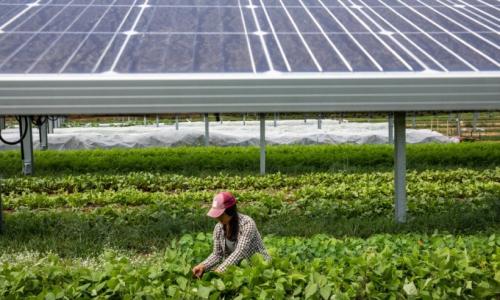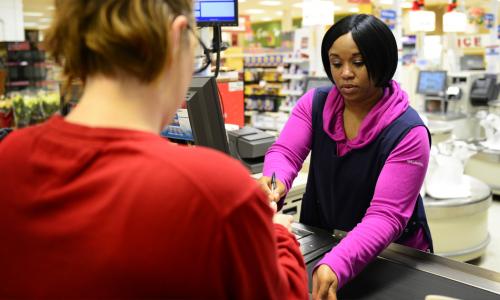Local and regional food systems are experiencing rapid growth in the U.S. With a little help from forward-looking public policy, they will continue growing, benefiting their customers, their local economies, and the nation's public health and environmental goals.
But what are they, exactly? Defining “local” is challenging, so here we focus on markets in which farmers sell food directly to a consumer or institution. We've put together a quick primer on some of the most common ways in which farmers sell their food directly to customers, bypassing mainstream, consolidated distribution and retailing systems.
Farmers Markets allow individual farmers and other vendors to market their products directly to consumers in a single location, giving shoppers their choice from a variety of fresh, local food. Frequently they occur in an outdoor public venue at specified times during the growing season. Farmers markets were once common in the U.S., but the rise of supermarkets and improvements in highway transportation led to their decline, and by 1970 there were just 340 farmers markets left in the country. In recent decades, farmers markets have made a dramatic comeback, and by 2011 their numbers had grown to over 7,000.
Community Supported Agriculture (CSA) is a system in which consumers buy a share of a farm's output at the beginning of the year and receive weekly installments of food throughout the growing season. This arrangement helps farmers by providing an infusion of cash early in the year and by allowing them to spend less time on marketing once the growing season begins. Benefits to consumers include the opportunity to support and interact with a local farmer and to receive fresh produce. According to one recent estimate, there are currently over 4,000 CSAs operating in the U.S.
Farm-to-School programs aim to improve the nutrition of school children by adding fresh, local food to cafeteria menus, to enrich their education through curriculum development and experiential learning opportunities, and to foster connections between local farms and communities. Similar models in other institutional markets—such as hospitals, prisons, and military installations—are also attracting growing interest.
Food Hubs are distribution centers that provide a logistical and marketing interface between farmers and regional buyers. Farmers deliver their products to the food hub, which provides storage, processing, and packaging services and markets the food to wholesale buyers such as restaurants, hotels, and universities, as well as retail customers. These facilities make it easier for local and regional farmers to compete with the mainstream, consolidated food production and distribution system.
Roadside Stands have long been a familiar fixture along secondary roads in rural areas. They provide farmers with the most convenient marketing channel imaginable (the food never has to leave the premises), while attracting customers with the promise of maximum freshness.
U-Pick Operations, like roadside stands, rely on bringing the customer to the farm. They differ in allowing the customer to go into the fields or orchards to harvest the food themselves. For many customers, there is a strong appeal in the idea of getting their food directly from the field it was grown in.



